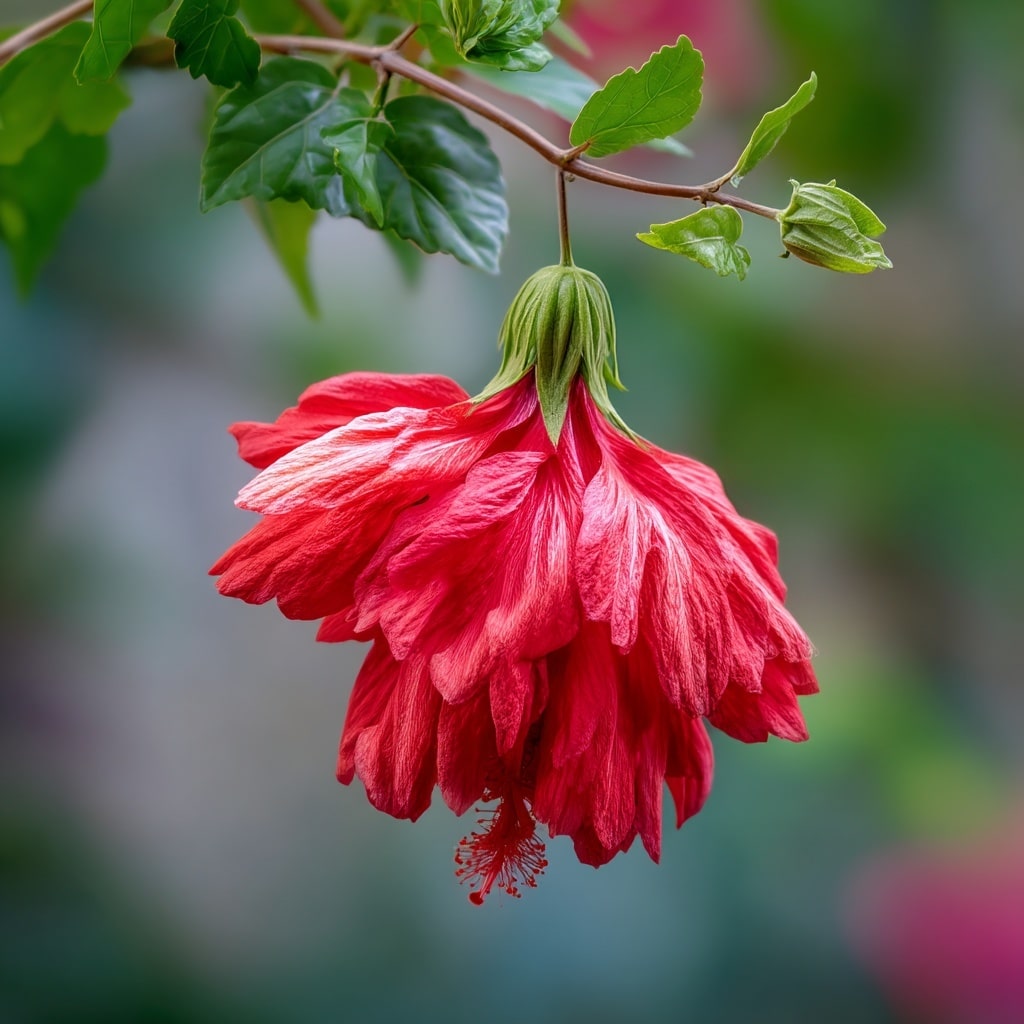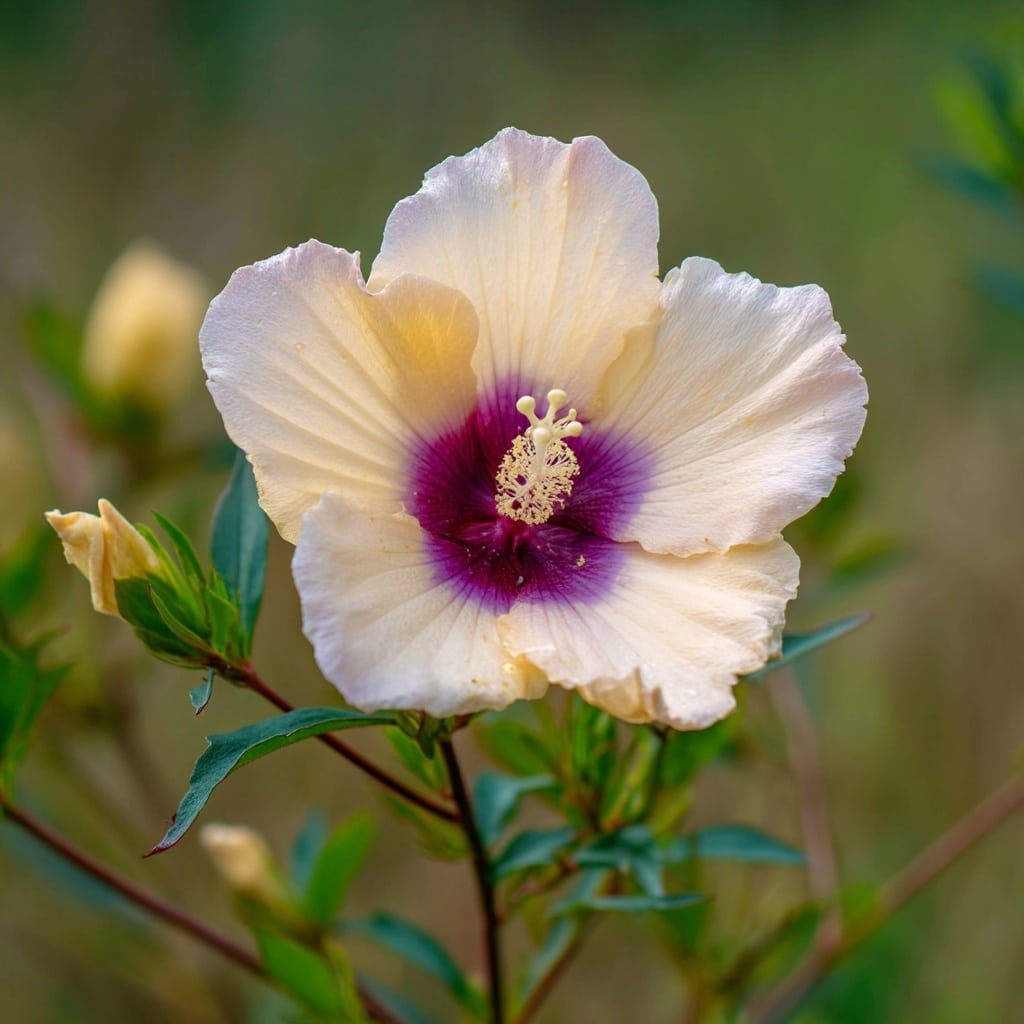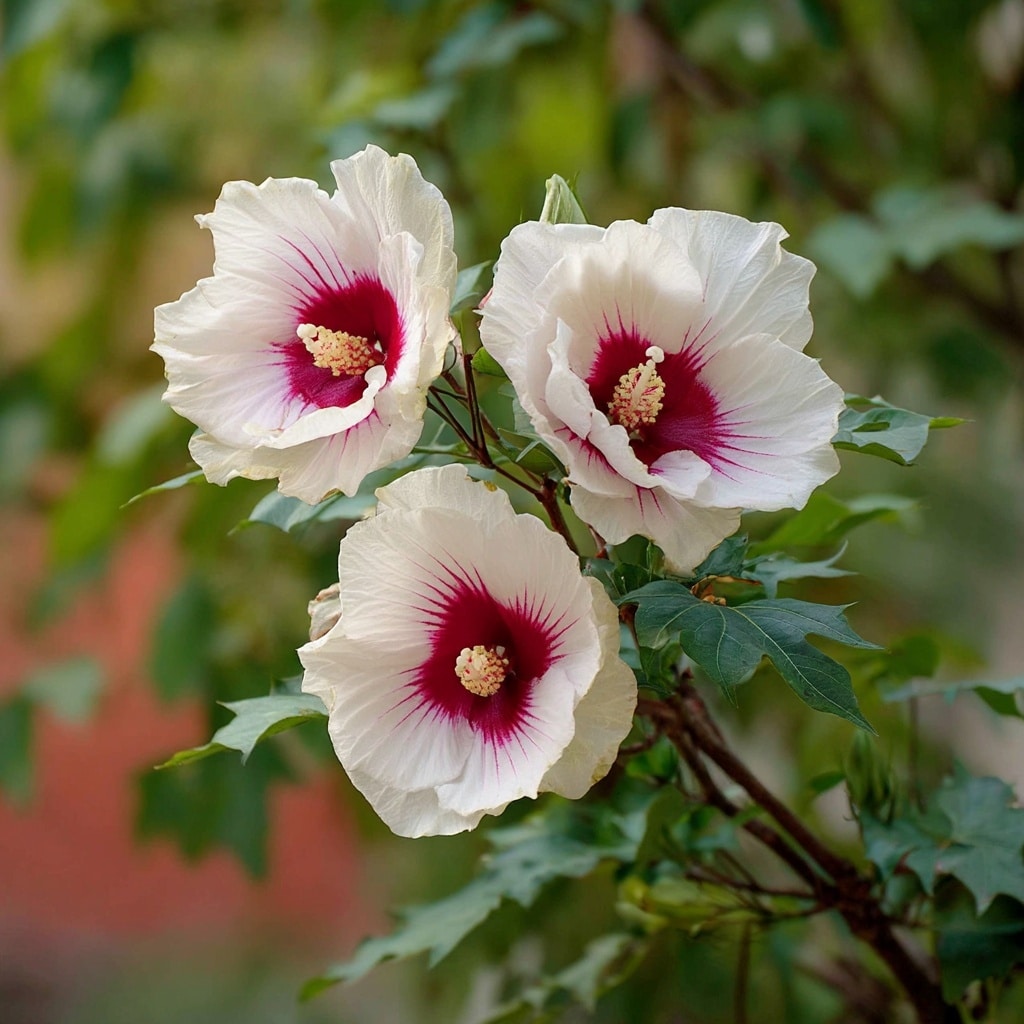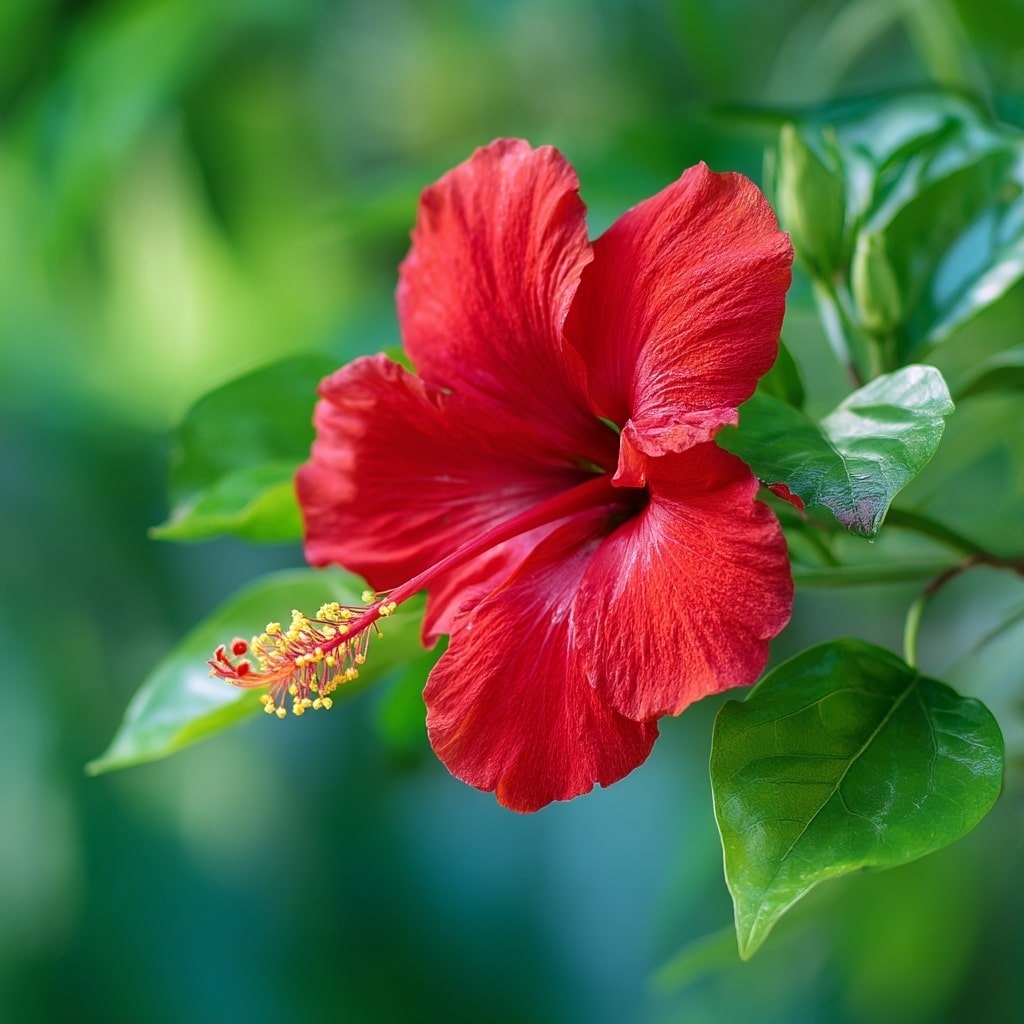Hibiscus flower varieties bring a vibrant splash of color and charm to gardens around the world. Whether you’re cultivating a tropical haven or seeking a hardy shrub for cooler climates, there’s a type of hibiscus flower to suit nearly every growing environment. These striking blooms aren’t just visually stunning — many also offer culinary, medicinal, and cultural value. In this guide, we’ll walk through seven of the most beloved and rare hibiscus types, helping you understand their unique traits, growing habits, and how they can elevate your garden.
1. Hibiscus rosa-sinensis (Chinese Hibiscus)
The Chinese hibiscus, or Hibiscus rosa-sinensis, is perhaps the most iconic hibiscus flower you’ll encounter in home gardens and tropical landscapes. Native to East Asia, this evergreen shrub thrives in warm, humid climates and is prized for its bold, luxurious blooms and year-round flowering habit.
Key Features:
- Bloom size: 10–15 cm (4–6 inches) in diameter
- Color range: Brilliant shades of red, orange, yellow, pink, and even multi-colored patterns
- Growth habit: Bushy and upright, ideal for hedging or standalone features
- Climate preference: Thrives in temperatures above 20°C (68°F); requires full sun
The flowers boast a silky texture and a signature protruding stamen, giving them a dramatic, tropical flair. Gardeners love this type not just for its visual appeal, but also because it flowers almost continuously with proper care. The Chinese hibiscus performs best in well-draining soil, regular watering, and high sunlight exposure.
👉 Tip: Prune lightly after flowering to encourage fuller growth and more blooms.
2. Hibiscus syriacus (Rose of Sharon)

Known for its hardiness and cold tolerance, the Hibiscus syriacus, or Rose of Sharon, is a deciduous shrub that’s perfect for temperate gardens. Unlike tropical varieties, this hibiscus flower thrives in cooler regions, making it a favorite in North America and parts of Europe.
Key Features:
- Bloom size: 5–10 cm (2–4 inches)
- Color range: Shades of pink, purple, white, and blue with darker centers
- Growth habit: Upright and woody, reaching up to 3 meters (10 feet) tall
- Climate preference: Tolerates USDA zones 5–9; prefers full sun to partial shade
The trumpet-shaped blooms open successively throughout late summer into early fall, ensuring a continuous show of color when many other flowers have faded. Its long blooming season and low maintenance make it a go-to choice for borders, privacy hedges, or specimen planting.
👉 Tip: For best flowering, plant in full sun and avoid over-fertilizing with nitrogen-rich formulas.
3. Hibiscus moscheutos (Hardy Hibiscus)

If you’re dreaming of hibiscus flowers the size of dinner plates, Hibiscus moscheutos, or Hardy Hibiscus, is your answer. Native to North America, this cold-hardy perennial stuns with its enormous blooms and ability to survive winter conditions that tropical varieties can’t tolerate.
Key Features:
- Bloom size: Up to 30 cm (12 inches) in diameter
- Color range: Bold whites, reds, pinks, and two-toned combinations with dark centers
- Growth habit: Clumping perennial, grows 1–2.5 meters (3–8 feet) tall
- Climate preference: Cold-hardy down to USDA zone 4; full sun is best
The wide, flat, saucer-shaped flowers emerge in midsummer and continue into fall, each bloom lasting a day or two but appearing in succession. Despite their delicate appearance, these plants are tough — they die back in winter and return vigorously in spring.
👉 Tip: Cut back stems to the ground in late fall or early spring to encourage new growth.
4. Hibiscus mutabilis (Confederate Rose)

The Confederate Rose, or Hibiscus mutabilis, is a captivating hibiscus flower known for its ability to transform color throughout the day. Native to China and cherished in Southern gardens, this variety brings both visual intrigue and seasonal charm.
Key Features:
- Bloom size: 10–15 cm (4–6 inches)
- Color transformation: Starts white or light pink in the morning, deepens to dark pink or red by evening
- Growth habit: Large shrub or small tree, reaching 3–5 meters (10–16 feet)
- Climate preference: Best in warm, humid climates; hardy in USDA zones 7–10
This hibiscus type produces double or semi-double blooms from late summer into fall, adding much-needed color when most garden plants begin to fade. The dramatic color shifts make it a conversational centerpiece in any landscape.
👉 Tip: Plant in a sunny location with good air circulation to reduce susceptibility to mildew.
5. Hibiscus sabdariffa (Roselle)

Hibiscus sabdariffa, widely known as Roselle, is a multi-purpose hibiscus flower appreciated not just for its ornamental value but also for its culinary, medicinal, and cultural uses. Native to Africa and cultivated in tropical climates worldwide, this variety stands out for its tangy red calyces, which are used in herbal teas and cooking.
Key Features:
- Bloom size: 8–10 cm (3–4 inches)
- Color palette: Pale yellow or light pink petals with a deep red center
- Growth habit: Fast-growing annual shrub, 1.5–2.5 meters (5–8 feet) tall
- Climate preference: Thrives in tropical and subtropical zones
While the flower itself is attractive, the real treasure lies in the thick, red calyces that form after the blooms fade. These are harvested for making hibiscus tea, jams, sauces, and even skincare products. It’s a beautiful plant with a highly functional twist.
👉 Tip: Harvest calyces about 10 days after the flower drops for peak flavor and color.
6. Hibiscus schizopetalus (Japanese Lantern)

Graceful and unusual, the Hibiscus schizopetalus, often called the Japanese Lantern or Fringed Hibiscus, is known for its intricate, downward-hanging blooms. Native to East Africa, this variety stands out with its finely cut petals and elegant form.
Key Features:
- Bloom size: 5–7 cm (2–3 inches)
- Color tones: Bright red or pink
- Growth habit: Arching or weeping shrub, reaching 1.5–3 meters (5–10 feet)
- Climate preference: Prefers warm, humid environments (USDA zones 10–11); requires frost protection
Unlike most hibiscus flowers, these blooms hang downward like a lantern and feature deeply fringed petals. They’re airy, lacy, and almost resemble a chandelier — a dramatic addition to tropical or subtropical gardens. The long, protruding staminal column enhances its ornamental appeal even further.
👉 Tip: This variety does best in containers or sheltered spots where its cascading form can be fully appreciated.
7. Hibiscus trionum (Flower of an Hour)

The Hibiscus trionum, poetically named the Flower of an Hour, is a delicate annual known for its short-lived blooms that open in the morning and fade by afternoon. Despite its brief appearance, this hibiscus flower captivates with contrast and charm.
Key Features:
- Bloom size: 4–6 cm (1.5–2.5 inches)
- Color scheme: Pale yellow or cream petals with a deep purple or black center
- Growth habit: Compact bush, typically under 1 meter (3 feet)
- Climate preference: Adaptable to temperate regions; does well in full sun and sandy soil
Though each bloom lasts only a few hours, the plant produces flowers continuously throughout the growing season. It’s perfect for low-maintenance gardeners looking for something unique, especially in wildflower meadows or naturalized spaces.
👉 Tip: This variety self-seeds easily, so plant once and enjoy it returning year after year in suitable climates.
Uses of Hibiscus Flowers
Beyond their visual appeal, the hibiscus flower plays a meaningful role in everyday life. From the kitchen to beauty routines and cultural traditions, these blooms are as functional as they are beautiful.
1. Floral Arrangements & Home Décor
The vibrant colors and bold shapes of hibiscus flowers make them ideal for tropical-themed bouquets, table centerpieces, or outdoor arrangements. Varieties like Hibiscus rosa-sinensis and Hibiscus schizopetalus are particularly popular for visual drama.
2. Culinary Applications
The Roselle variety (Hibiscus sabdariffa) is especially prized in cooking:
- Herbal teas: Tart and refreshing, hibiscus tea is rich in antioxidants.
- Jams and syrups: Its tangy flavor adds depth to sweet spreads and sauces.
- Savory dishes: In some cultures, Roselle leaves and calyces are used in stews or chutneys.
3. Skincare & Beauty
Hibiscus extract is used in various beauty products for its skin-friendly properties:
- Promotes hydration and elasticity
- Contains natural AHAs (alpha-hydroxy acids) for gentle exfoliation
- Often found in facial masks, creams, and hair care products
4. Cultural & Spiritual Uses
In many cultures, the hibiscus flower holds symbolic meaning:
- In Polynesia and Hawaii, it’s worn behind the ear as a symbol of relationship status
- In Hindu and Buddhist traditions, it’s used in offerings and rituals
- Often symbolizes femininity, beauty, and delicate strength
5. Health & Wellness
Hibiscus tea, especially from the Roselle plant, is believed to:
- Lower blood pressure
- Aid digestion
- Support immune health due to its high vitamin C content
👉 Tip: Always confirm the specific variety’s edibility and safety before using it in food or wellness products.
Fun Facts About Hibiscus Flowers
These fascinating facts show just how unique and culturally rich the hibiscus flower really is. Whether you’re a gardener or simply an admirer, there’s more to hibiscus than meets the eye.
🌺 1. Color-Changing Varieties Exist
The Hibiscus mutabilis (Confederate Rose) is famous for its ability to shift color throughout the day — starting out white in the morning, turning pink by midday, and deep red by evening. A single plant can showcase multiple hues in 24 hours.
🌼 2. Short Lifespan, Big Impact
Most hibiscus blooms last just one or two days. Some, like Hibiscus trionum, bloom for only a few hours. Yet, these plants continue producing flowers in succession, offering a steady display throughout their season.
💐 3. A Global Symbol of Femininity
In many cultures, the hibiscus is a symbol of beauty, femininity, and grace. It’s often associated with goddesses, celebrations, and courtship. In Hawaiian culture, where it’s called “pua aloalo,” it’s considered the state flower and a symbol of hospitality.
🍵 4. It’s a Health Booster
Hibiscus tea — especially from Roselle — has gained popularity worldwide for its potential health benefits, including reducing blood pressure and supporting liver health.
🎨 5. Naturally Vibrant Pigments
The pigments in hibiscus flowers are so strong that they’re sometimes used to create natural dyes for fabrics, cosmetics, and even food.
Conclusion
The hibiscus flower is far more than just a beautiful bloom — it’s a symbol of culture, a culinary ingredient, a healing herb, and a visual standout in gardens across the globe. From the classic Chinese hibiscus to the fleeting beauty of Hibiscus trionum, each variety brings something unique to the table.
Whether you’re planting for visual impact, seeking a natural tea ingredient, or simply drawn to their symbolic meaning, there’s a hibiscus type that fits your needs. With proper care and placement, these flowers can transform any space into a lush, colorful oasis.
For more guides on ornamental plants, tropical gardening, or flower care, be sure to check other related articles on your site to keep your garden blooming year-round.


